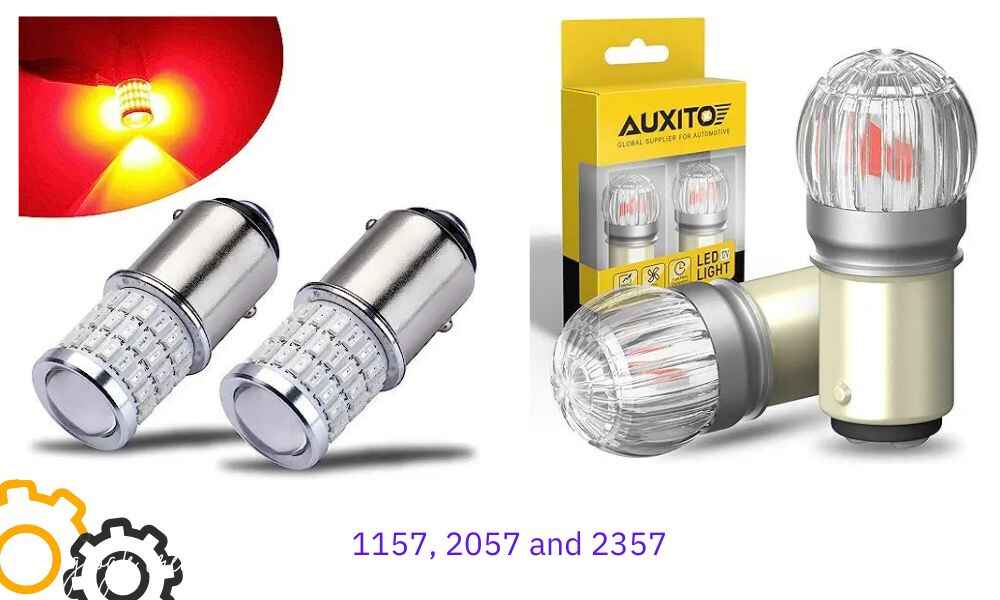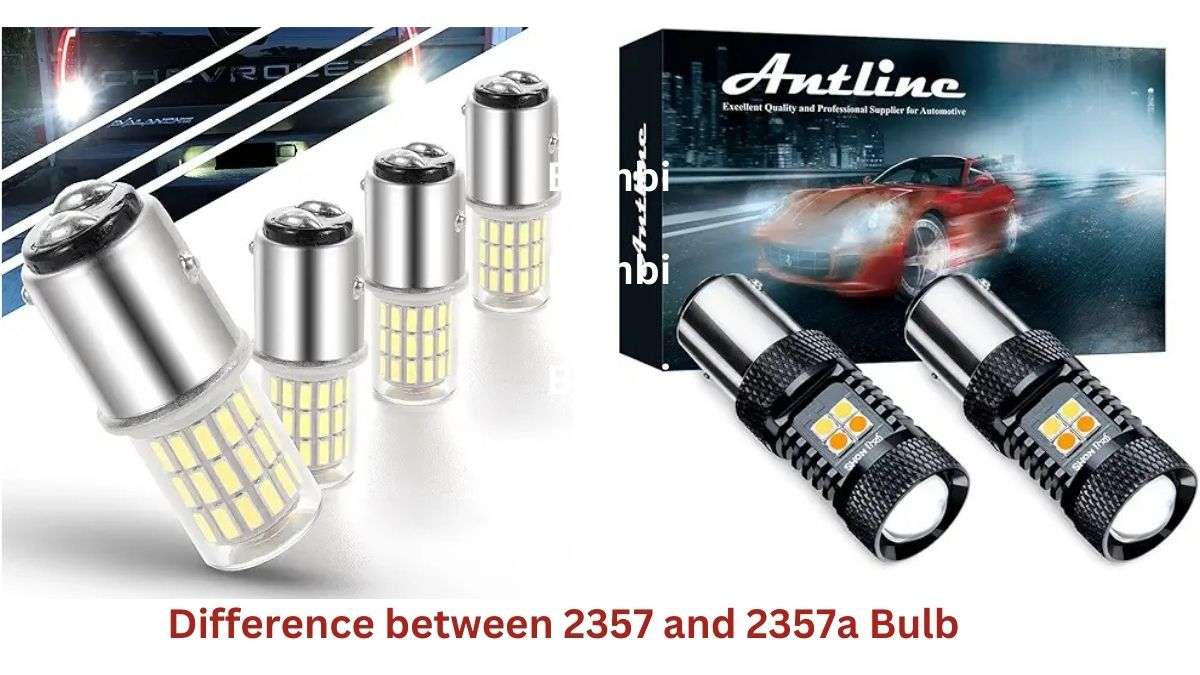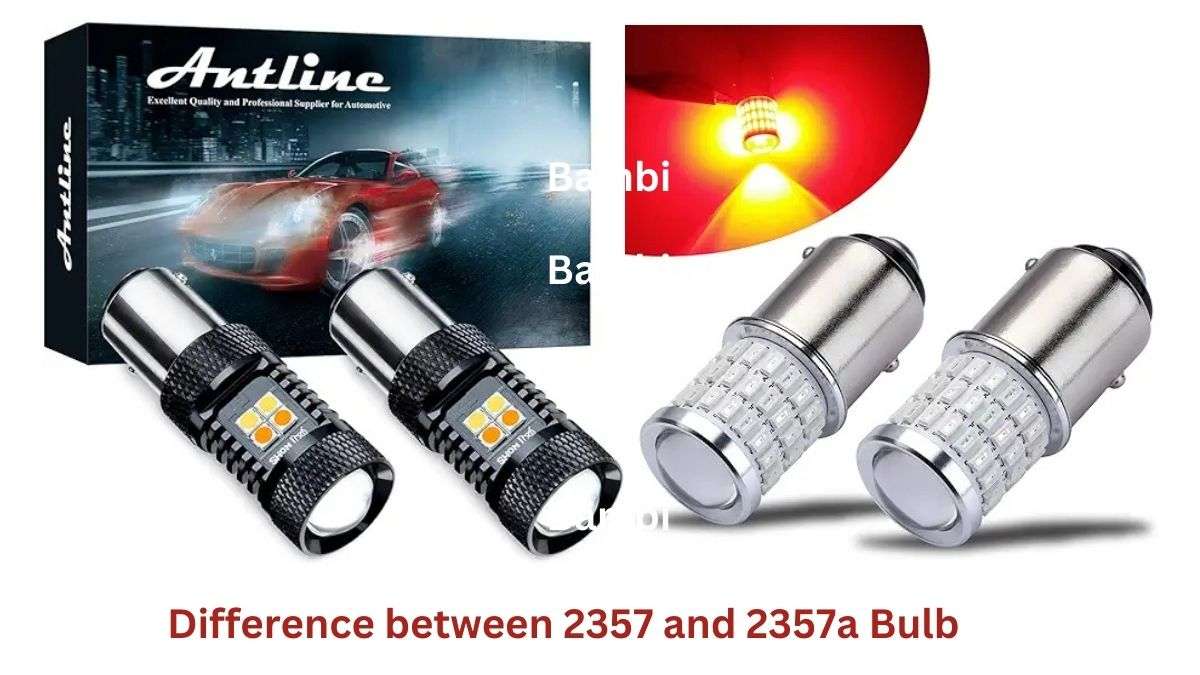Did you know that choosing the wrong automotive bulb can not only affect your visibility but could also land you a traffic citation? I’ve seen countless drivers confused about the subtle differences between 2357 and 2357A bulbs! As an automotive lighting specialist with over a decade of experience, I’ll break down everything you need to know about these commonly mixed-up bulbs. Whether you’re replacing your brake lights or turn signals, this guide will help you make the right choice and keep you safely on the road!
Understanding Basic Specifications
The 2357 and 2357A bulbs look quite similar at first glance, but they come with differences that are essential to know. These subtle variations can impact the performance and compatibility with your vehicle.
1. Voltage and Wattage Comparison
Both 2357 and 2357A bulbs operate on a standard 12V automotive system, but their wattages differ slightly. The 2357 bulb generally has a higher wattage than the 2357A, meaning it can deliver a bit more brightness, which can be crucial for brake lights.
2. Base Type and Physical Dimensions
Physically, both bulbs have a common base type, allowing them to fit in many of the same sockets. However, always double-check the dimensions and socket compatibility since a secure fit ensures steady performance.
3. Filament Configuration Differences
The 2357 and 2357A bulbs are dual-filament, meaning they can support two brightness levels, often used for functions like brake and tail lights. The arrangement and performance of these filaments may vary, impacting the intensity and efficiency of the light emitted.
4. Color Temperature and Light Output Comparison
One notable difference between the 2357 and 2357A is color temperature. The 2357 emits a standard white light, while the 2357A bulb has a slightly amber tint. This makes the 2357A more suitable for certain turn signals and hazard lights, where amber is required.
5. Industry Standard Compliance Specifications
Both bulbs comply with industry standards for automotive lighting, but it’s essential to check your regional regulations to ensure you’re using the right one, as some regions have strict requirements for color and brightness in specific lighting functions.
Key Applications and Vehicle Compatibility
Choosing the right bulb for your vehicle’s specific make and model can help avoid issues down the road.
1. Common Vehicle Makes and Models for 2357 Bulbs
The 2357 bulb is popular in many makes and models, including Ford, Chevrolet, and Toyota. It’s often used in brake lights, tail lights, and even some turn signal applications.
2. Typical Applications for 2357A Bulbs
The 2357A is designed for situations where an amber hue is necessary, making it a common choice for front turn signals. Always refer to your vehicle’s manual to confirm which bulb is the best fit for specific lighting purposes.
3. Cross-Reference Guide with Other Bulb Types
Both 2357 and 2357A bulbs can sometimes be substituted with bulbs like the 2057 or 1157, but this can lead to reduced performance or compatibility issues. Check with a professional or use an OEM reference guide to avoid confusion.
4. OEM Specifications and Requirements
Original Equipment Manufacturer (OEM) specs are essential to ensure you’re choosing a bulb that matches your vehicle’s electrical system and lighting needs. Using non-OEM-approved bulbs could affect your vehicle’s performance.
5. Regional Regulations and Compliance
Some regions require amber turn signals, which makes the 2357A a preferred option. Always double-check local regulations before making a switch, as failure to comply could lead to fines.
2357 vs 2357a Performance Differences
Understanding performance variations can help you make the right choice based on your driving needs and preferences.
i). Light Output Intensity Comparison
The 2357 bulb, with its higher wattage, tends to be slightly brighter than the 2357A. This can improve visibility, especially for brake lights, enhancing road safety.
ii). Power Consumption Analysis
While both bulbs are efficient, the 2357 bulb typically consumes more power due to its higher wattage, which could impact your battery if used extensively.
iii). Expected Lifespan Differences
The 2357A bulb often has a slightly longer lifespan due to its lower wattage. If longevity is a priority, the 2357A may be a better choice for applications that don’t demand high brightness.
iv). Heat Generation and Thermal Characteristics
Higher wattage bulbs like the 2357 may generate more heat, which can impact nearby components. Ensure proper ventilation if using these bulbs in enclosed fixtures.
v). Real-World Performance Testing Results
In practical tests, the 2357 bulb generally performs well in brake light applications, where visibility is essential, while the 2357A is favored for turn signals, particularly in vehicles where amber lights are standard.
Installation and Replacement Guidelines
Replacing these bulbs may seem straightforward, but it’s important to follow certain guidelines to ensure safe installation.
Step-by-Step Installation Process
1. Turn off the vehicle and open the lens housing.
2. Unscrew or unlock the bulb socket.
3. Remove the old bulb carefully and insert the new 2357 or 2357A bulb.
4. Secure the housing back in place and test the light.
Common Installation Mistakes to Avoid
Avoid touching the bulb with your bare hands, as oils from your skin can cause it to burn out faster. Ensure it’s seated properly to prevent flickering.
Required Tools and Safety Precautions
Typically, all you’ll need is a screwdriver, but always wear gloves and ensure the vehicle’s power is off to prevent shocks.
Troubleshooting Tips
If the bulb doesn’t light up after installation, check for loose connections or possible fuse issues. Double-check the socket compatibility to ensure you’re using the right bulb.
Professional Installation vs. DIY Considerations
If you’re unfamiliar with automotive wiring, consider seeking professional help to avoid damaging your vehicle’s electrical system.
Cost Analysis and Value Comparison
When it comes to cost, it’s wise to consider long-term value rather than just the upfront price.
Average Price Points for Both Bulbs
The 2357 and 2357A bulbs are generally affordable, with slight price differences depending on brand and retailer.
Long-Term Cost Considerations
Since the 2357 bulb has higher power consumption, it may need replacement sooner than the 2357A, which could affect your long-term budget.
Availability and Market Analysis
Both bulbs are widely available, but the 2357A may be more common in regions where amber turn signals are mandatory.
Common Questions and Misconceptions
Interchangeability Myths Debunked
While some drivers assume these bulbs are interchangeable, using the wrong one can lead to subpar performance and potential legal issues.
Safety Considerations
Always use the correct bulb type to ensure optimal brightness and color, especially for brake and turn signals.
Performance Impact on Electrical Systems
Using a bulb with different wattage or color than recommended can impact your vehicle’s electrical system and lighting efficiency.
Upgrade Options and Limitations
LED options are available as upgrades for both 2357 and 2357A bulbs, but make sure they’re compatible with your vehicle to avoid errors.
Expert Recommendations
For brake lights, the 2357 bulb offers better visibility. For turn signals, especially if amber is required, the 2357A is your best choice.
Conclusion: Differences Between 2357 and 2357A bulb
Understanding the differences between 2357 and 2357A bulbs is crucial for maintaining your vehicle’s lighting system and ensuring road safety. Remember, while these bulbs may look similar, their specific applications and performance characteristics make them unique. Always consult your vehicle’s manual before making a replacement, and don’t hesitate to seek professional help if you’re unsure. Ready to upgrade your vehicle’s lighting? Use this guide to make an informed decision and keep your ride safely illuminated!
Related articles:


